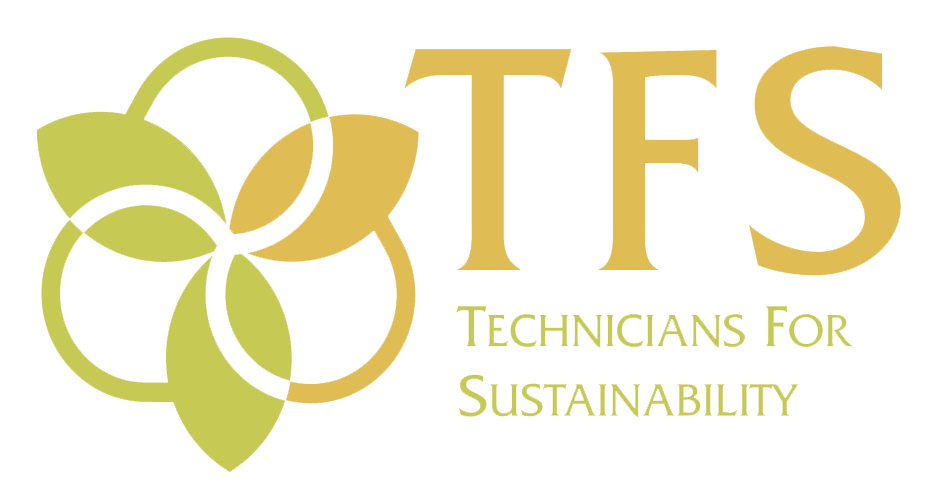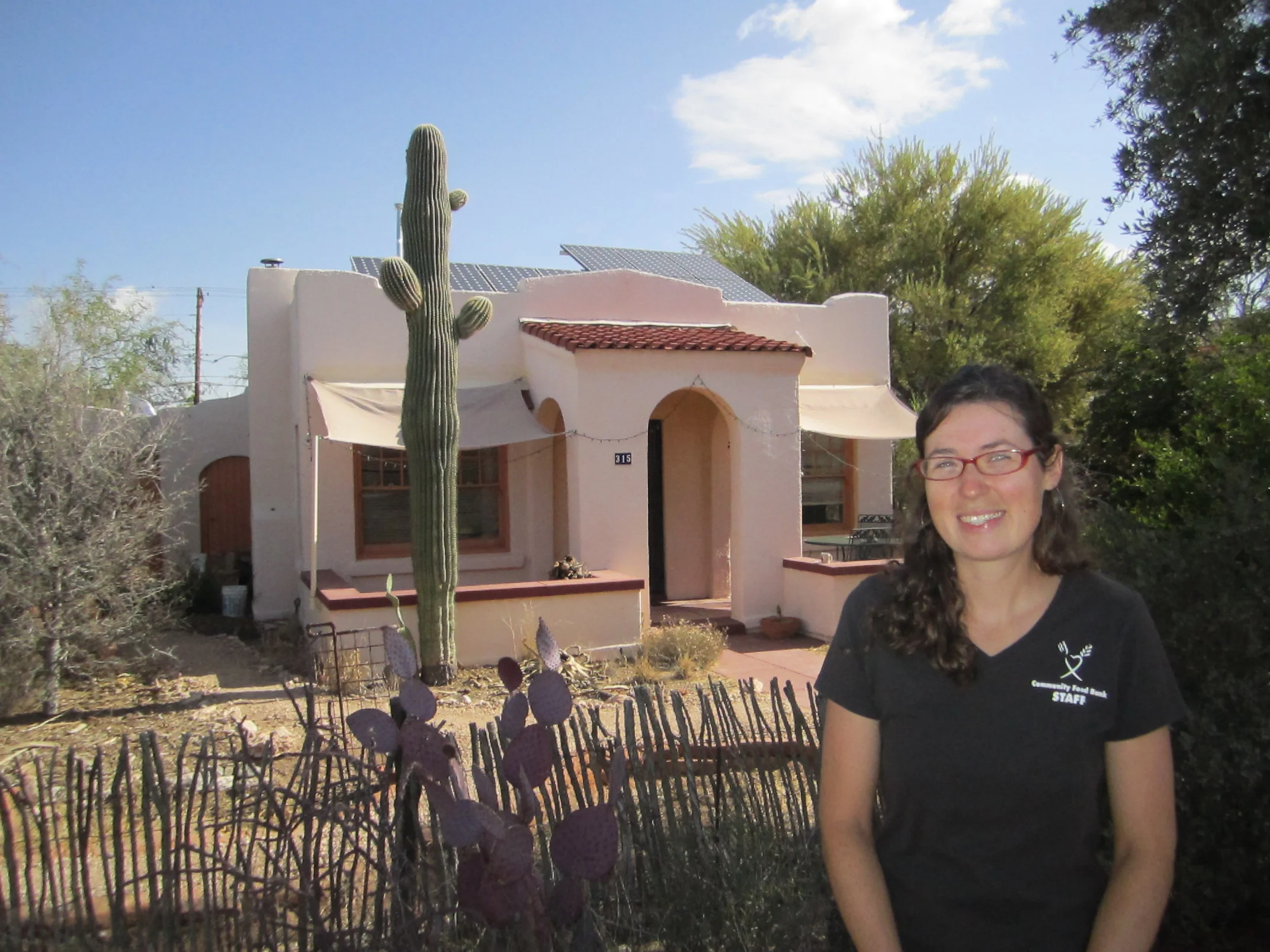Behind every great installation, there’s a good story — meet Leona.
Leona Davis has turned her home into a working model of sustainability by installing a solar electric (PV) system as well as a water harvesting system. Leona’s background is in plants, the environment and water, which she puts into action in her position at the Tucson Community Food Bank. She sees many pieces to the sustainability puzzle: Southern Arizona’s water issues, electricity generation, people and plants. Over 3 million gallons of water are used every day for Southern Arizona’s electricity production, which is equivalent to what we use for agricultural purposes. For Leona, it’s important to consider the social change that’s connected to environmental change, as well as the possibility of attaining environmental justice through social justice. How we get our energy is part of the big picture change.
While studying natural resources at the University of Arizona (UA), Leona worked with several student groups to implement positive environmental change by installing water harvesting cisterns throughout campus and by starting a water harvesting course that is still taught at UA every year. She also had a hand in the solar panel donation that currently helps to power the UA Visitor Center, which was the first UA building to utilize solar power.
Leona purchased her home in 2008 and at any given time has between three and six roommates sharing her central Tucson bungalow. “Several months after I bought the house, I took out a loan to fund a handful of home improvement projects, which included the PV system. I looked at the solar system as an investment, that would lower our utility bills and save us a lot of money in the long run,” explained Leona.
“I had a 2.3 kW system installed in December of 2008. I wanted to put as much solar on my roof as possible; however, space was an issue. In order to deal with the limited roof space, I went with 10 SunPower 230 watt solar panels. Since they are the most efficient panels out there, you get more power out of a smaller space.”
“I’m psyched to show off my panels. That I’m not burning fossil fuels. My goal was to create a demonstration space that would illustrate to people in my community the sustainable steps anyone can take to create an urban homestead, and hopefully inspire them to do something similar, ” adds Leona.
“I’d like to tell people that solar isn’t just an investment for you, it’s also a donation to the world.”
“Although, I have hardwired habits, like turning off lights, I’m not fanatical about being conservative. During the spring, we pay nothing for our electricity usage, and sometimes we overproduce, which means we get credit from the utility company. In the winter and summer we tend to use more electricity, but the bill is still low, in the $10 range.”
The only surprise that Leona encountered along the way was how quickly and easily everything came together, with the total installation only taking one day.
Leona offered one bit of advice, “Generally, in our culture, younger people are not geared toward investing. Often times we will see the price of something and think, ‘wow, that’s too much, there’s no way I’m doing that.’ But they don’t think about what that price entails socially, environmentally, as well as financially. Really thinking about the benefits of solar long term isn’t something that many young people do and I think that’s important to consider when deciding to forgo fossil fuels and install solar.”
| System Size | 2.3kW |
| Estimated Monthly Production | 299kWh |
| Module Number & Type | 10 SunPower 230w |
| Inverter | PV Powered 2500 |
| PV Mounting & Pitch | Roof Mount, 25 Degrees |
| Monthly Environmental Savings | 299 lbs of Coal 666 lbs of CO21.1 lbs of NOx 2 lbs of SO2 150 gal of H2O |




